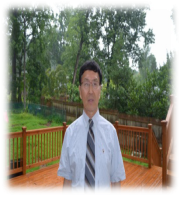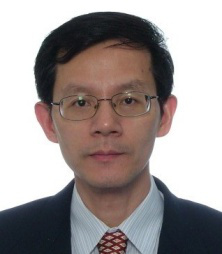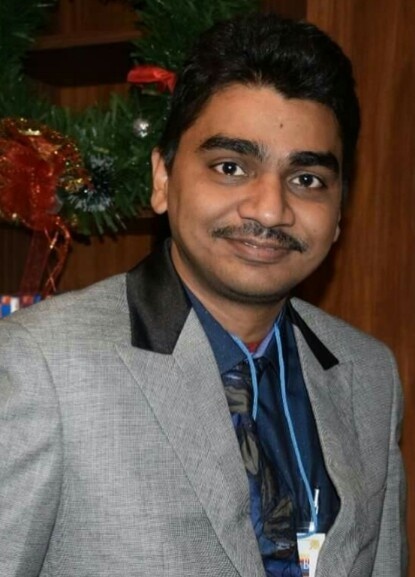Keynote Speaker

Prof.Dr.John Wang
Dept. of Information Management & Business Analytics
School of Business Montclair State University, USA
John Wang, Ph.D, works in the Department of Information Management and Business Analytics at Montclair State University, USA. Having received a scholarship award, he came to the USA and completed his PhD in operations research from Temple University. Due to his extraordinary contributions, Prof. Wang has been honored with two special range adjustments in 2006 and 2009 respectively. He has published over 100 refereed papers and more than ten books. He has also developed several computer software programs based on his research findings.
He is the Editor-in-Chief of Int. J. of Information Systems and Supply Chain Management (www.igi-global.com/ijisscm) and International Journal of Applied Management Science (www.inderscience.com/ijams). Also, he is the Editor of Encyclopedia of Business Analytics and Optimization (five-volume), Data Warehousing and Mining: Concepts, Methodologies, Tools, and Applications (six-volume) and the Editor of the Encyclopedia of Data Warehousing and Mining, 1st (two-volume) and 2nd (four-volume). His long-term research goal is on the synergy of operations research, data mining and cybernetics.

Prof. Weiwen Deng
Beijing University of Aeronautics and Astronautics
Prof. Weiwen Deng is a distinguished professor at Beihang University, Fellow of China SAE. Currently he serves as Chair of Intelligent Driving Committee of Chinese Association for Artificial Intelligence (CAAI) and Vice Chair of Intelligent Vehicle and Robot Committee of China Instrument and Control Society (CIS). Previously he served as Dean of Transportation Science and Engineering of Beihang University, Executive Director of Automotive Research Institute of Jilin University, and Acting Director of Hong Kong Automotive Parts & Accessory R&D Center since 2010, and was a senior researcher in GM R&D Center since 1996. His primary research areas are in electric and intelligent vehicles, dynamics and controls, and modeling and simulation technologies. Currently he also serves as Editor-in-Chief of International Journal of Vehicle Autonomous Systems, Associate Editors of International Journal of Vehicle Design, Journal of Vibration and Control, and editorial board members of several prestigious international journals.

PProf.Dr.Nilanjan Dey
Department of Information Technology
Techno India College of Technology,Kolkata, INDIA
Dr. Nilanjan Dey, is an Assistant Professor in Department of Information Technology at Techno India College of Technology, Kolkata, India. He is a visiting fellow of the University of Reading, UK. He is a Visiting Professor at Duy Tan University, Vietnam, He was an honorary Visiting Scientist at Global Biomedical Technologies Inc., CA, USA (2012-2015). He was awarded his Ph.D. from Jadavpur University in 2015. He has authored/edited more than 55 books with Elsevier, Wiley, CRC Press, and Springer, and published more than 300 papers. He is the Editor-in-Chief of International Journal of Ambient Computing and Intelligence, IGI Global, Associate Editor of IEEE Access and International Journal of Information Technology, Springer. He is the Series Co-Editor of Springer Tracts in Nature-Inspired Computing, Springer Nature, Series Co-Editor of Advances in Ubiquitous Sensing Applications for Healthcare, Elsevier, Series Editor of Computational Intelligence in Engineering Problem Solving and Intelligent Signal processing and data analysis, CRC. His main research interests include Medical Imaging, Machine learning, Computer Aided Diagnosis, Data Mining etc. He is the Indian Ambassador of International Federation for Information Processing (IFIP) – Young ICT Group. Recently, he has been awarded as one among the top 10 most published academics in the field of Computer Science in India (2015-17).
Title: Bio-inspired Algorithms in Medical Information Hiding for Tele-monitoring
Widespread use of wireless communication as well as telemedicine necessitates the demand for copyright protection of multimedia. Information required for detection of diseases is conveyed through medical images. Authentication is very significant in validating a medical content in the domain of telemedicine; however, there are many challenges. Any kind of misrepresentation can result in flawed diagnosis. However, for authenticity and security of data, a small amount of distortion can be ignored. Thus, accurate verification is paramount, and any misuse of personal information may have serious consequences. One of the effective techniques for secure information communication and transfer is watermarking. The watermarked image/signal of the individual is then transmitted through a communication channel.
Hence, achieving a watermarking technique with an insignificant amount of distortion in bio-medical information is an exigent task. Watermarking requires embedding of diagnostic and health care information accurately without affecting the medical image or misuse of e-consultation. Medical information authentication is performed by embedding the ownership data within the content is more trustworthy than the classical method of transmitting the content individually without any ownership data.
There are numerous metrics to measure the effectiveness of the used watermarking algorithm. The most significant two requirements are watermark robustness and watermark imperceptibility. Though these two requirements are all very desirable, they conflict with each other and some tradeoff must be compromised. Additionally, depending upon the texture information and the image size, the watermarking embedding factors vary from one cover image/signal to another. To optimize the level of robustness and perceptibility of the watermarking technique, selection of an optimum set of embedding factors is very essential.
Thus, bio-inspired techniques can be employed for acquiring the optimized watermarking algorithm. In the fields of information hiding researches employed several types of bio-inspired computing, such as Ant Cuckoo Search (CS), Colony Optimization (ACO), Bee Algorithm (BA) and Firefly Algorithm (FFA). Consequently, it is required to design appropriate embedding factors for these optimization algorithms. With the properly designed selected embedding factors, bio-inspired computing can be helpful to the design of watermarking algorithm. The optimal scaling factors optimized by the used bio-inspired algorithm can be sent through some secret communication channel. Then, in the recipients end, the gray/binary hospital logo and the electronic patient report (EPR) are extracted from the watermarked image/signal.
In this talk, a comprehensively study the behavior of some well-established watermarking algorithms (transformation domain) for the preservation of diagnostic parameters in optimization framework is discussed. A secure and strong authentication system for an efficient and secure medical information watermarking using well-known bio-inspired algorithms, namely CS and FA are used to embed multiple medical data within a biomedical image in an optimized way are conducted. Additionally, watermarking based Particle Swarm Optimization (PSO) and Genetic Algorithm (GA) performance is compared to the CS and FA based algorithms for watermarking. Furthermore, the talk will reported how the proposed optimized scale factors can be utilized along with, two mathematical measures for the computation of the devalorization of diagnostic parameters caused as an effect of watermarking, namely the diagnostic devalorization (DDsystem) and diagnostic preservation (DPsystem) for effective watermarking. Moreover, two different sets of watermarking algorithms, namely: two correlation-based (binary logo hiding) and two singular value decomposition (SVD)-based (gray logo hiding) watermarking algorithms, as used for embedding ownership logo are conducted. The talk will clarify how the proposed optimized watermarking algorithm can have minimum effect on the diagnostic parameters.
The talk highlights a novel perception in understanding the watermarking based on bio-inspired optimization approach to alleviate scalability, communication and security for medical images transmission. Finally, the talk will discuss some of the future trends in watermarking using hybrid bio-inspired optimization algorithms.
